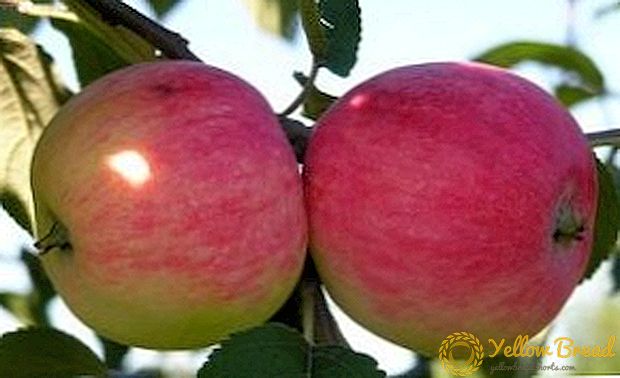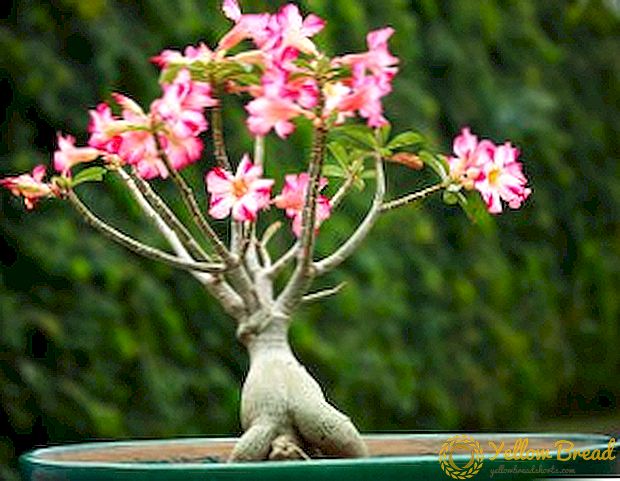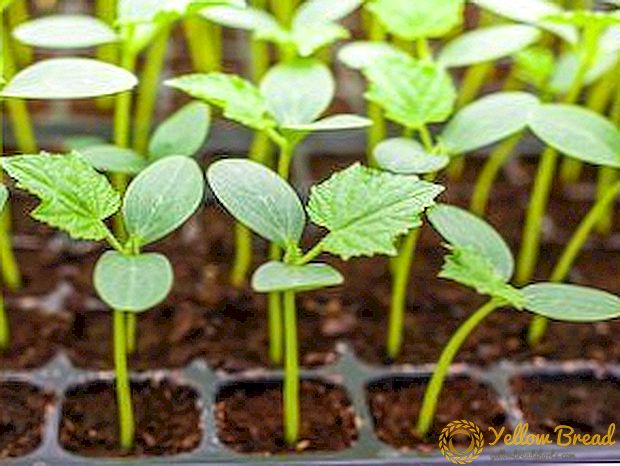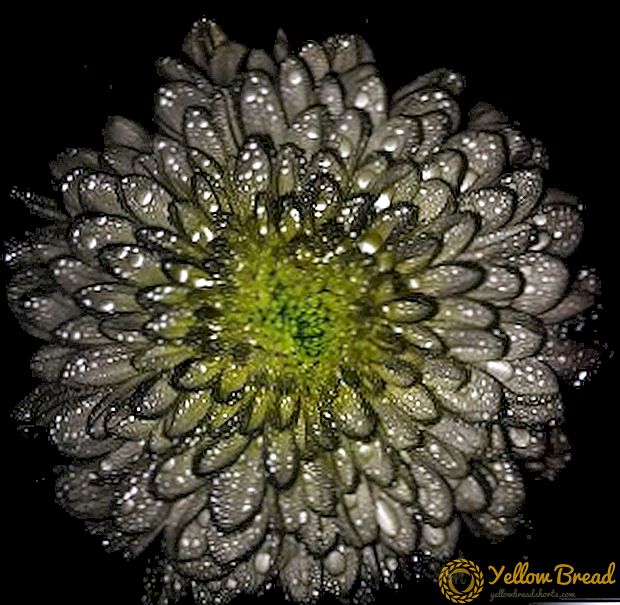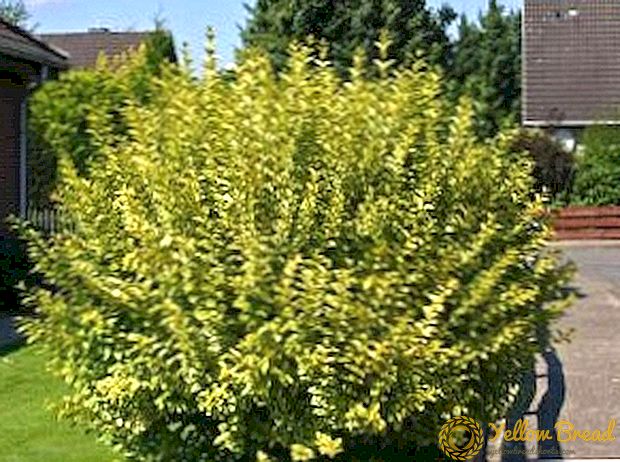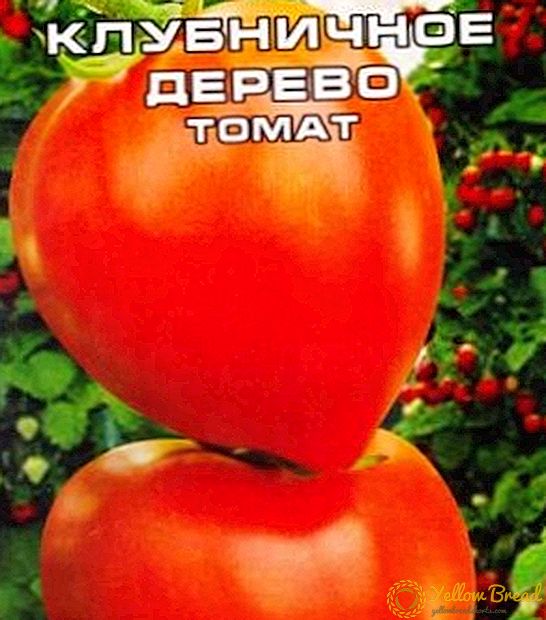 The decorative strawberry tomato variety is relatively new, there are already a lot of reviews about it, but there is little full information about the cultivation details.
The decorative strawberry tomato variety is relatively new, there are already a lot of reviews about it, but there is little full information about the cultivation details.
Therefore, in this article we cover in detail the main points on sowing, care, fertilizer and pest control.
- Appearance and description of the variety
- Characteristics of the fruit
- The advantages and disadvantages of the variety
- Agrotechnology
- Seed preparation, planting seeds and care for them
- Seedlings and planting in the ground
- Care and watering
- Pests and diseases
- Conditions for maximum fruiting
- Use of fruits
Appearance and description of the variety
The variety of tomatoes "Strawberry tree" was bred by Russian scientists in 2013 and to this day has a great success in agriculture. Breeders have tried to make this variety the most prolific and resistant to different types of diseases and parasites. 
Characteristics of the fruit
The tomato bush has a curling non-stembered structure, growth is determined after the appearance of the first inflorescence. The fruits are heart-shaped and look very similar to large strawberries.

The advantages and disadvantages of the variety
The advantages include:
- high yield - up to 4-5 kg of tomatoes can be collected from one bush;
- genetic perfection - this variety was created using hybridization of other varieties, so it includes all their advantages;
- aesthetic appearance - these tomatoes were derived as a decorative greenhouse variety, so long bushes with hanging clusters of fruits are not only intended for human consumption, but also for decorating a greenhouse or greenhouse;
- large fruits;
- resistance to temperature extremes;
- disease resistance (tobacco mosaic and verticillary wilt);
- can grow on barren land;
- Fruits quickly subside if collected in the undersized form.

Deficiencies in the variety is still there, but they can vary depending on the growing conditions:
- fruits are too large for salting whole;
- does not tolerate drought;
- requires a very scrupulous garter - "Strawberry Tree" is quite difficult to grow in the open field, because this tomato is very tall.
Agrotechnology
The agrotechnology of the landing of this variety is exactly the same as for any other.
It is impossible to overfeed the soil with fertilizer, "Strawberry Tree" is unpretentious to the ground and can grow and bear fruit even on sandy soil.
The best fertilizer for any variety of tomatoes will be wood ash and eggshell. 
Seed preparation, planting seeds and care for them
Tomatoes "Strawberry tree" are most often sold in the form of seeds from different manufacturers, therefore, first of all, you need to check the description and shelf life on the package.
Disinfection is done by soaking (about a day) in a solution of potassium permanganate (1%), treated with copper sulphate (100 mg per 1 liter of water) or a solution of boric acid (200 mg per 1 liter of water).  After disinfection, the seeds should be spread on a damp cloth, make sure that they do not stick together and that the cloth never dries out. After 3-4 days, the seeds will sprout and need to be planted in separate containers for seedlings to a depth of 0.5-1 cm.
After disinfection, the seeds should be spread on a damp cloth, make sure that they do not stick together and that the cloth never dries out. After 3-4 days, the seeds will sprout and need to be planted in separate containers for seedlings to a depth of 0.5-1 cm.
Picks should be done after the appearance of two or three leaves on the shoot, at this stage the plant begins to form a more complex root structure, and he needs a pot deeper.
Seedlings and planting in the ground
Seedlings should be kept at a temperature of + 18 ... +25 ° C for the first 3-4 days after the emergence of sprouts, then you need to move the plant to a temperature of + 10 ... +15 ° C so that the sprouts do not stretch out too quickly.
Sown seeds need 1-2 months so that they can be planted in open or greenhouse soil.  In greenhouse conditions, the soil should be loosened and drained, the tomatoes are planted in the greenhouse, as a rule, in early May. When transplanting into open ground, the beds should be fertilized and mulched, and the earth should be heated, so you need to focus on the 15-20th of May.
In greenhouse conditions, the soil should be loosened and drained, the tomatoes are planted in the greenhouse, as a rule, in early May. When transplanting into open ground, the beds should be fertilized and mulched, and the earth should be heated, so you need to focus on the 15-20th of May.
Care and watering
Tomato "Strawberry tree" should be regularly watered, as this directly affects its yield. In the greenhouse, the soil is moistened every 3-5 days, in open beds depending on the weather, every day or every 3-5 days.

Pests and diseases
This variety can get sick with brown spot if you overdo it with watering or light.To cure plants of brown spot will help garlic solution and the correct barrier to light.
Tomatoes "Strawberry tree" in greenhouses also suffer from the greenhouse whitefly and spider mite. From the tick it is necessary to wipe sick leaves and parts of the trunk with soapy water. The whitefly should be poisoned by sprinkling with special preparations.
Conditions for maximum fruiting
To stimulate the best yield, use top dressing from superphosphate fertilizer during flowering and fruiting (3 tablespoons per 10 liters of water).
Superphosphate should also be used if the leaves of the tomatoes turn blue or become rusty - this is a sign of phosphate starvation.  When planting seedlings in a greenhouse or in open soil, you can add 10-15 g of superphosphate to each well. This fertilizer nourishes the root system and improves the taste of fruits, it is mineral and non-steroid.
When planting seedlings in a greenhouse or in open soil, you can add 10-15 g of superphosphate to each well. This fertilizer nourishes the root system and improves the taste of fruits, it is mineral and non-steroid.
Tomatoes are very fond of potassium-nitrogen fertilizer, it is worth making the first time you move the seedlings into the soil and the second time immediately, as the first brush began to tie.
A small list of potassium-nitrogen fertilizers, which are used both for foliar and for root feeding:
- Potassium monophosphate KH2PO4 - dissolve 1-2 g per liter in water.
- Potassium sulfate - the solution is not more than 0.1% (you should not overdo it with sulfates).
- Magnesium potassium sulphate - is used in the same way as regular potassium sulphate, but is applicable on more sandy soils, which usually have a lack of magnesium.
- Wood ash - is very rich in potassium and, moreover, home-made natural fertilizer. Ash should be diluted in proportions of 300-500 g per 10 liters.

Use of fruits
Since the tomatoes are beautifully shaped - they are perfect for pickling. Because of the low dry matter content, you can make tomato juice from these tomatoes, they are quite juicy and tasty for fresh salads. This variety can also be dried, dried and added to caviar.
The variety "Strawberry Tree" prevails by virtues: it is unpretentious, bears fruit well, it can be grown in different ways both in greenhouses and in open ground. And you can eat sour-sweet tomatoes similar to very large strawberries in absolutely any form.

